A Best and Final Offer (BAFO) is often the last chance to influence the outcome of a tender. Buyers use BAFO to test value, refine proposals and gain assurance on risk and deliverability before they award. This guide from the expert team at Thornton & Lowe explains what BAFO is, why it is used and how to approach it with a clear structure and strategy. You will find practical tips on pricing and value, common mistakes to avoid, and simple checklists you can use to sense-check your response before submission.
What is a BAFO?
The Best and Final Offer (BAFO) stage is a key part of bid and tender writing, giving suppliers a final opportunity to improve their proposal and win the contract. This stage is often used in public sector tenders and large private sector procurement processes, where buyers need to refine bids before awarding the contract. If you’ve reached the BAFO stage, you are one of the final competitors, typically up against just 1 to 3 other bidders—so it’s your last chance to make your proposal stand out.
Definition and Purpose
BAFO stands for Best and Final Offer. It's a stage in procurement where suppliers can submit their best possible proposal. The main goal is to get the best deal for the buyer. This can be used in both Government procurement, as well as private sector tenders.
In a BAFO, suppliers are asked to review their initial bids. You can then make changes to things like price, quality, or delivery times. This helps create more competition between suppliers. It also gives the buyer a clearer picture of what each supplier can offer.
BAFOs are often used in complex projects or when initial bids are close.
Comparison with Other Tender Stages
BAFO comes after the initial bidding round but before the final decision. It's different from other stages in a few key ways:
- It's not always used - only when needed
- It allows changes to bids
- It's typically the last chance for suppliers to improve their offers
Here's a quick look at how BAFO fits into the tender process:
- Request for Proposal (RFP)
- Initial bids
- Bid evaluation
- BAFO (if needed)
- Final evaluation and decision
BAFOs are more flexible than initial bids. They let buyers focus on specific areas that need improvement.
Legal and Ethical Considerations
When using BAFO, buyers should be fair and transparent. All qualified suppliers should have the same chance to improve their bids if they stand a chance of being successful.
BAFO should not be used to drive down prices unfairly. The goal is to get the best overall value, not just the lowest price.

How to Prepare for BAFO: A Practical Guide
The Best and Final Offer (BAFO) stage is one of the most important parts of the bid writing process. It’s often the final opportunity to refine your proposal before the buyer makes a decision. While many think of BAFO as just a pricing adjustment, it's much more than that. This stage allows you to strengthen your offer, address feedback, and demonstrate added value without compromising on profitability.
Getting your BAFO right means understanding what the buyer is looking for and presenting a clear, persuasive submission that stands out. Here’s how to approach it:
Reviewing the BAFO Invitation
A BAFO request means you are in the final stages of the procurement process. You’ve already been shortlisted, which means the buyer sees potential in your proposal. However, they want more assurance before making their final decision.
Carefully reviewing the BAFO request will help you understand exactly what is expected. Look for:
- Any updates to the original tender documents, including changes to scope or requirements
- Specific areas where the buyer has asked for improvements
- Additional questions or clarifications from the evaluation process
If the buyer has provided feedback, use it to guide your approach. Look at where your initial bid may have been weaker and where you can enhance your offer. This is your chance to refine key areas rather than making unnecessary changes across the board.
Strengthening Your Offer
Your BAFO submission should focus on value. While pricing may be a factor, the buyer is looking for the best solution overall. Simply reducing costs can harm your margins and may not even be necessary. Instead, consider:
- Offering cost efficiencies without compromising quality
- Refining your delivery model to make it more attractive
- Strengthening your commitments on service levels, sustainability, or innovation
If price is a key factor in the tender, look at ways to make your proposal more competitive without cutting too deep. Can you adjust your payment terms? Offer a discount for a longer contract period? Provide additional services at no extra cost? Buyers want to see value, but they also want sustainable, reliable contracts.
Cost and Pricing Strategy
Your pricing needs to be clear and justifiable. If you are making changes, ensure they are explained in a way that reassures the buyer. Rather than simply lowering your costs, consider presenting structured options. This could include:
- Tiered pricing based on volume or contract duration
- Alternative solutions that reduce costs without impacting performance
- Additional support, such as training or extended warranties, to improve overall value
If reducing costs, make sure any changes align with the buyer’s expectations. Avoid making reductions that could later impact your ability to deliver the contract successfully.
Improving Delivery and Service Commitments
Buyers often use the BAFO stage to refine the finer details of a contract. This could be your opportunity to improve your proposal in ways that make it more attractive.
- Can you offer a shorter mobilisation period?
- Would a phased rollout make your service more effective?
- Is there an opportunity to introduce process improvements that reduce risk?
If your initial bid included a 12-week delivery timeline, could you refine this to 10 weeks with minor adjustments? If training or ongoing support was previously limited, could you extend this to give the buyer more confidence in your approach? Small improvements can make a big difference, particularly in a competitive bidding process.
Addressing Risk and Compliance
A strong BAFO demonstrates that you have considered potential risks and have a plan to manage them. Buyers want reassurance that the contract will run smoothly, with minimal disruptions.
Think about the risks from the buyer’s perspective. These could include supply chain issues, regulatory requirements, or service continuity concerns. If your bid already addressed these, reinforce your approach. If not, use the BAFO stage to introduce stronger risk management measures.
- Outline contingency plans for potential challenges
- Provide additional commitments around compliance and governance
- Reference similar contracts where you have successfully mitigated risk
This will help strengthen your proposal and position you as a low-risk supplier.
Presenting Your BAFO Submission
The way you present your BAFO matters. Buyers are often reviewing multiple submissions, so making your improvements clear and easy to follow will work in your favour.
Consider structuring your submission with a simple before-and-after table to highlight the changes:
Proposal Element | Initial Submission | BAFO Update |
|---|---|---|
Delivery Timeline | 12 weeks | 10 weeks |
Customer Support | Standard 9-5 | 24/7 support for Year 1 |
Sustainability | 10% carbon reduction | 15% carbon reduction through supplier switch |
This makes it easy for the buyer to see where you have made improvements. It also reinforces that your BAFO is well thought out and based on real, deliverable changes.
Submitting a Compliant, On-Time BAFO
Missing a BAFO deadline or failing to follow submission instructions can put you out of the running immediately. Even if your response is the strongest, a late or incomplete submission is unlikely to be considered.
Before submitting, check that:
- All requested documents are included and formatted correctly
- Your pricing and commercial offer align with the buyer’s request
- Any supporting evidence, such as case studies or references, is up to date
- Your proposal is clear, concise, and free from errors
Making the Most of Your BAFO
BAFO isn’t just about making your bid more competitive - it’s about giving the buyer confidence that you are the best supplier for the contract. Focus on strengthening the areas that matter most, whether that’s pricing, delivery, risk management, or overall value.
A strong BAFO submission will:
- Address any concerns or weaknesses from the initial bid
- Offer clear and meaningful improvements
- Demonstrate a strategic and considered approach
- Reinforce why your solution is the best fit
Taking the time to get this stage right can make all the difference in securing the contract. If you need support in refining your BAFO submission, our bid writing team can help ensure your offer is as strong as possible. Contact us today to discuss how we can improve your chances of success.

How Thornton & Lowe Can Help
Changes under the Procurement Act will increase the use of the Competitive Flexible Procedure, meaning more post-tender negotiations and BAFO opportunities. This will require suppliers to edit, update, and resubmit their bids more frequently to remain competitive.
As specialist bid and tender writing consultants, we provide expert support throughout this process. Whether you need help refining your offer, strengthening your value proposition, or ensuring compliance, our team can help you maximise your chances of success.
We assist with:
- Reviewing and editing BAFO submissions to align with buyer expectations
- Strengthening pricing strategies and value-add proposals
- Ensuring clarity, structure, and compliance in resubmissions
- Managing bid deadlines and submission requirements
With more post-tender negotiations becoming standard, a well-prepared BAFO can make all the difference. Contact us today to discuss how we can help you submit a winning bid.
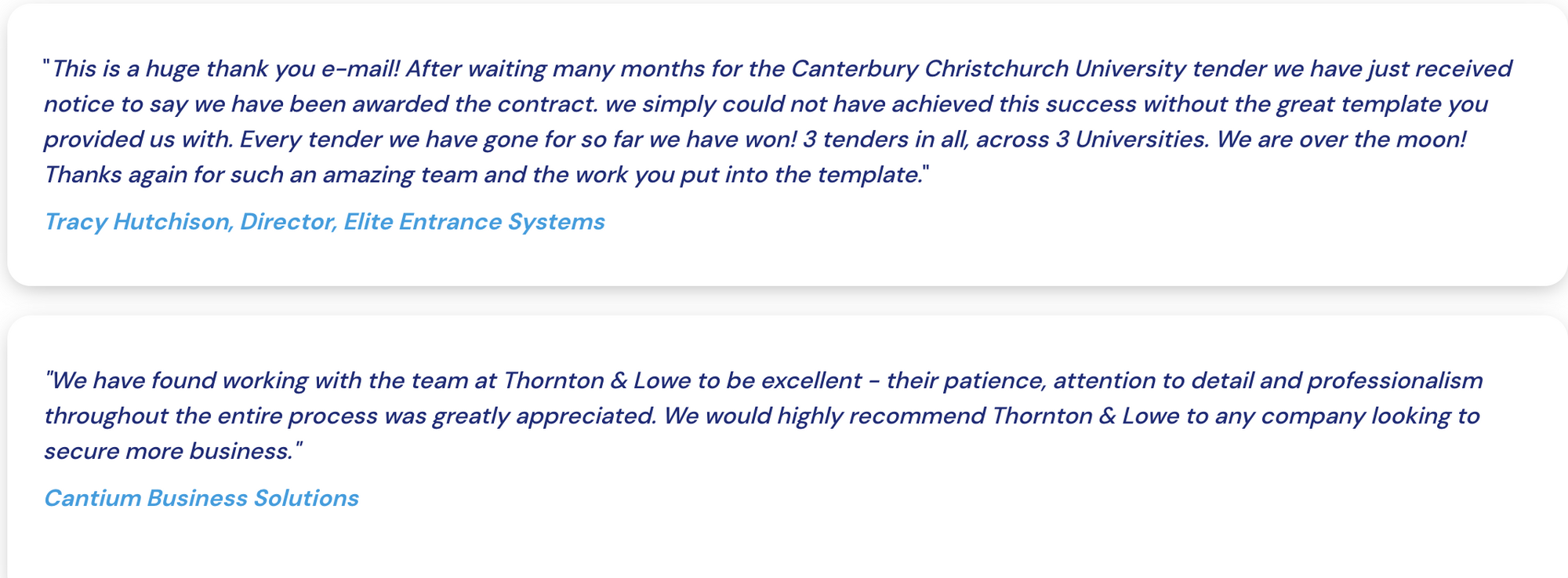
Strategic Considerations in BAFO
Winning a BAFO often requires some smart tactics!
Costing and Pricing Strategy
Your BAFO pricing must be competitive yet profitable. Look at your costs closely and find areas to trim without cutting quality. Think about volume discounts or bulk pricing if applicable. Consider offering tiered pricing options to give the buyer choices.
Be ready to justify your prices. Show how your solution provides value beyond just the bottom line. Highlight any unique features or benefits that set you apart from rivals.
Don't just slash prices blindly. Make sure your offer is sustainable long-term. Factor in potential cost increases over the contract life. The buyer will equally want it to be sustainable, even though being able to report a quick cash saving may also be in their mind.
Risk Assessment and Mitigation
Identify key risks in the project or contract. These might include supply chain issues, regulatory changes, or resource shortages. For each risk, outline your plan to avoid or manage it.
Be upfront about risks in your BAFO. Explain how you'll handle them and why your approach is best. This shows you've thought things through and builds trust.
Consider offering guarantees or penalties tied to performance. This shows confidence and may give you an edge. But be sure you can deliver on any promises.

BAFO Submission Process
The BAFO submission process requires thorough preparation. You need to focus on providing comprehensive documentation, ensuring compliance, and maintaining clear communication throughout. This screams professionalism to the potential client involved.
Detailed Documentation
Your BAFO submission must include all required documents and information. Create a clear, well-organised proposal that addresses each aspect of the buyer's request. Consider your bid design and formatting such as charts, tables, and graphs to present data in an easy-to-understand format. Make sure your pricing details are accurate and clearly explained.
Break down costs for each component or service. Include any relevant certificates, qualifications, or past performance records. Highlight your unique selling points and how they align with the buyer's needs.
Proofread all documents carefully to avoid errors or typos that could harm your credibility.
Compliance and Submission Checklist
Develop a thorough checklist to ensure your BAFO meets all requirements. Review the buyer's guidelines and deadlines carefully. Double-check that you've included all requested information and documents.
Key items to verify:
- Correct format and file types
- Signature of authorised representative
- Required number of copies (if applicable)
- Proper labelling of all documents
- Adherence to page limits or word counts
- Policies have been reviewed and updated within 12 months and are signed
Submit your BAFO before the deadline. Late submissions are often rejected outright, so allow time for unexpected issues.
Post-submission Communication
After submitting your BAFO, be prepared for potential follow-up questions or clarification requests. Designate a point of contact to handle any buyer inquiries promptly and professionally.
Keep records of all communications related to your BAFO. If allowed, send a confirmation email to the buyer to ensure they've received your submission. Be patient during the evaluation process, but stay ready to provide additional information if needed.
If you're not selected, politely request feedback to improve future proposals. If successful, be prepared to move forward with contract negotiations quickly.
Need bid support?
Contact us todayBest Practices in Bid Management
Successful bid management requires a mix of skills, teamwork, and tools. These elements help create winning proposals and secure valuable contracts.
Project Management Skills
Strong project management is key for bid success. You need to set clear goals and timelines for your bid team. Break down the proposal into smaller tasks and assign them to team members. Keep track of progress using simple charts or spreadsheets. Make sure everyone knows their role and deadlines, this includes subject matter experts who can be highly useful during a BAFO process.
Be ready to adjust plans if things change. Good time management is crucial - leave room for reviews and last-minute changes. Always have a backup plan for unexpected issues.
Use your project management skills to:
- Plan the bid process from start to finish
- Manage resources effectively
- Handle risks and solve problems quickly
Team Collaboration
A strong, united team is vital for creating top bids. Encourage open communication among team members. Set up regular check-ins to share updates and tackle challenges together. Create a positive environment where everyone feels valued and heard.
Use tools like shared documents and chat apps to keep everyone in the loop. Assign clear roles but allow flexibility for team members to help each other out. Celebrate small wins to keep morale high during the often stressful bid process.
Tips for better team work:
- Hold brainstorming sessions to gather ideas
- Pair up team members with different skills
- Give and ask for feedback often
Using Technology for Bid Management
The right tech tools can make bid management much smoother. Bid management software keeps all your documents and data in one place. These systems help you track deadlines, manage versions, and quickly find the info you need.
Look for tools that let you work together in real-time on bid documents. This cuts down on confusion and speeds up the review process. Use data analytics to learn from past bids and improve your future ones.
Helpful tech for bid management:
- Cloud storage for easy file sharing
- Project management apps for task tracking
- Data visualisation tools for clear reporting
Remember to train your team on any new tech you bring in. This ensures everyone can use the tools effectively and get the most benefit from them.

BAFO Bidding Top 10 Tips For Success
Best and Final Offer (BAFO) process:
- Be clear about the unique value you offer and ensure it aligns with the buyer's needs. This will help you stand firm on your pricing and negotiate confidently.
- Before entering negotiations, determine the lowest price you can accept without compromising your business's financial health or the quality of your deliverables.
- Approach the BAFO process with the mindset of finding a mutually beneficial solution rather than seeing it as a win-lose scenario. This ensures a more collaborative atmosphere during negotiations.
- Clearly articulate the reasons behind your pricing, such as the value you provide, your expertise, or the resources required to deliver the solution effectively.
- Identify areas where you can add value beyond price, such as offering exceptional customer service, providing additional training, or suggesting process improvements that can benefit the buyer.
- If you need to make concessions, choose items that have a minimal impact on your bottom line or the overall solution. Avoid conceding on essential elements that could compromise the quality of your deliverables.
- If you must lower your price, make sure to remove some aspects of the scope to maintain your profit margins. This also demonstrates to the buyer that your initial pricing was fair and well-thought-out.
- Be open and honest about your concerns, limitations, and the reasoning behind your decisions. Clear communication builds trust and facilitates a smoother negotiation process.
- Show the buyer that you are dedicated to finding the best solution for their needs. Be responsive, professional, and flexible within reason.
- If the buyer's demands jeopardise your business's financial stability or your ability to deliver a quality solution, be prepared to respectfully decline and walk away from the deal. It's not worth it!
You may also like:
See our tender questions and answers section
Click hereCommon BAFO Mistakes to Avoid
A BAFO invitation usually means you are close to winning, but the buyer still has concerns about value, risk or affordability. At this stage, small mistakes can undo months of work. The aim is to give the buyer confidence that your solution is still the best choice once everything has been refined.
Mistake 1: Treating BAFO as Just a Price Cut.
Fix: Focus on added value—better service levels, stronger guarantees, or improved delivery.
Mistake 2: Not Addressing Buyer Feedback.
Fix: Re-read clarifications, Q&A responses, and any debrief notes from previous stages.
Mistake 3: Overcomplicating Your BAFO.
Fix: Keep your improvements clear and well-structured. Use tables, bullet points, and summaries to highlight key changes.
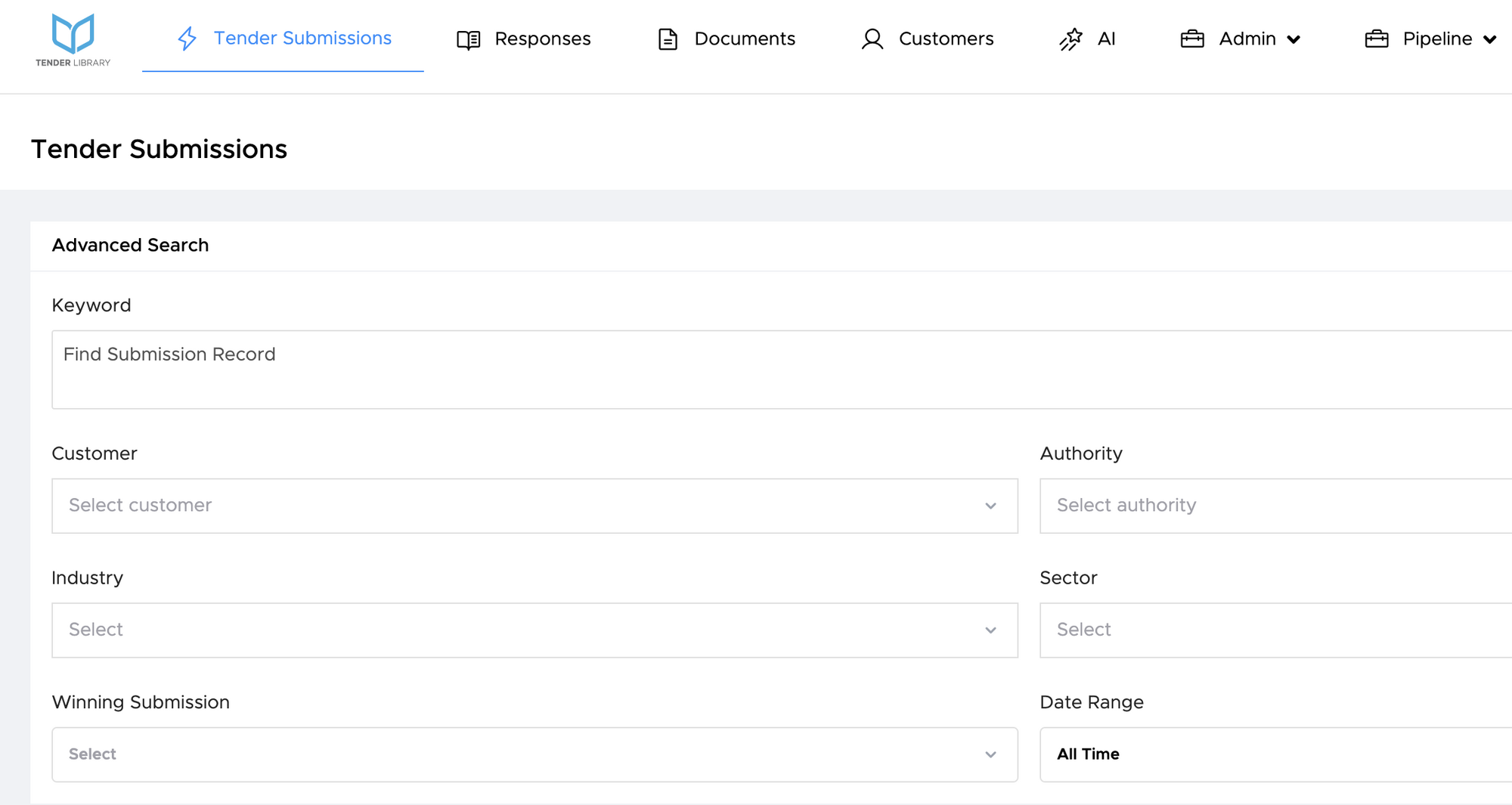
Digital Tools and Templates for BAFO Preparation
The complexity and time constraints of the BAFO process make effective digital tools and templates not just helpful but essential for competitive submissions. With procurement becoming increasingly digital-first, suppliers who leverage appropriate technology gain significant advantages in efficiency, accuracy, and presentation quality. Understanding the landscape of available tools helps organisations select solutions that best fit their specific needs and capabilities.
Document collaboration platforms represent perhaps the most fundamental technology for modern BAFO preparation. Solutions like Microsoft 365 with SharePoint integration, Google Workspace, or specialised bid platforms provide real-time collaboration capabilities that allow multiple contributors to work simultaneously while maintaining version control. The most effective solutions include permission management to ensure contributors only access sections relevant to their expertise, reducing the risk of inadvertent changes to finalised content.
Pricing tools deserve particular attention during BAFO preparation, as commercial adjustments often form a central element of revised offers. Beyond basic spreadsheets, consider utilising specialised pricing software that can model different scenarios, visualise margin impacts, and generate professionally formatted pricing schedules. Tools like Strategic Pricing Associates or specific modules within broader ERP systems enable faster development of alternative pricing options while maintaining accuracy and cross-referencing between narrative and pricing elements.
For complex BAFOs involving multiple contributors and interdependent components, project management software becomes invaluable. Platforms like Monday.com, Asana, or Microsoft Project help manage internal deadlines, track progress against the submission timeline, and identify bottlenecks before they impact the critical path. The most effective implementations include automated notifications for approaching deadlines and dashboards giving bid managers oversight of the entire process.
Content management represents another critical area where technology offers significant advantages. Organisations that regularly participate in tenders benefit from establishing searchable content libraries or knowledge bases containing previously approved responses, case studies, and evidence. During the pressured BAFO process, the ability to rapidly locate and adapt proven content rather than creating everything from scratch provides both time savings and quality improvements. Solutions range from simple taxonomies within SharePoint to dedicated bid libraries like those offered by Thornton & Lowe's bid management software, which helps organisations maintain and utilise their tender content effectively across all bidding activities.
Compliance checking software helps ensure submissions meet all formal requirements – a particularly important consideration during BAFOs where requirements may have evolved since the original tender. Tools like DocuSign Contract Analytics or specialised modules within broader bid management platforms can scan your draft submission against the tender requirements, identifying potential gaps or inconsistencies before they become costly oversights.
Design and presentation tools play an increasingly important role as buyers face multiple similar offerings. Professional desktop publishing software like Adobe InDesign, or more accessible alternatives like Canva Pro, enable the creation of visually compelling documents that enhance readability and emphasise key differentiators. Remember that evaluators typically review multiple lengthy documents under time pressure – clear design with appropriate use of callout boxes, charts, and visual hierarchy significantly improves information retention.
When selecting tools, consider both immediate needs and longer-term capability development. While sophisticated bid management platforms offer comprehensive functionality, they typically require significant implementation effort and organisational change. For organisations with less frequent BAFO participation, modular approaches combining existing systems with targeted enhancements often provide better value. The key consideration should be improving quality and reducing stress rather than simply adding technology for its own sake.
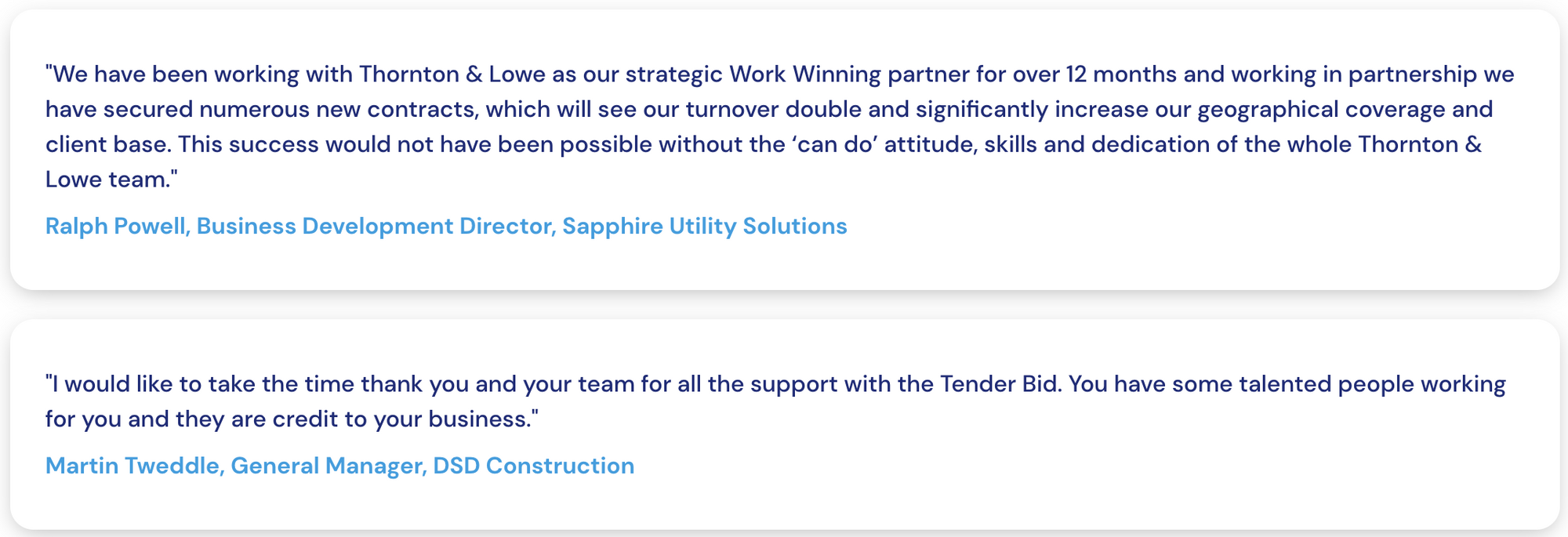
BAFO Negotiation Techniques: Balancing Competition and Collaboration
The negotiation phase of the BAFO process requires a delicate balance between competitive positioning and collaborative problem-solving. Unlike traditional commercial negotiations where parties often adopt adversarial stances, procurement negotiations, particularly in the public sector, operate within specific regulatory frameworks that influence how both buyers and suppliers should approach discussions. Mastering these unique dynamics can significantly enhance your chances of success.
Preparation forms the foundation of effective BAFO negotiations. Before entering any discussion, ensure you have a clear understanding of your priorities, commercial boundaries, and areas of flexibility. Develop a comprehensive negotiation strategy that identifies your must-haves, nice-to-haves, and potential concessions. This preparation should include scenario planning for different buyer positions and predetermined responses that maintain your commercial viability while demonstrating flexibility.
During negotiations, adopt a questioning mindset rather than immediately responding to every buyer request. Skilled negotiators ask thoughtful questions to uncover the underlying needs behind specific requirements or requests for price reductions. For instance, if a buyer is pressing for lower costs, questions like "Which specific elements of our proposal seem most misaligned with your budget expectations?" or "Are there particular components where you see opportunities for efficiency?" can reveal their true priorities and help you target adjustments more precisely.
When making concessions, always ensure they are reciprocal and conditional. Rather than simply reducing prices or adding services in isolation, frame adjustments as exchanges: "We can accommodate a 5% price reduction if the contract duration is extended to three years" or "We're prepared to enhance the service level agreement if the payment terms can be adjusted to 30 days rather than 60." This approach maintains the commercial balance while demonstrating flexibility.
Documentation becomes particularly important during BAFO negotiations. Following each discussion, document agreed points, areas for further consideration, and any commitments made by either party. Share these notes with the buyer to ensure mutual understanding and create a record of the developing agreement. This practice not only prevents misunderstandings but also creates a useful reference for your final submission preparation.
Tone and relationship management play crucial roles in procurement negotiations. While maintaining commercial discipline, approach discussions with a collaborative rather than confrontational demeanour. Demonstrate understanding of the buyer's constraints and priorities while clearly articulating your own position. This balanced approach builds trust without compromising your commercial interests.
When faced with challenging requests, avoid immediate reactions. Instead, take time to consider the implications fully before responding. Phrases like "That's an interesting proposal. We'd like to explore how that might work and will come back to you with our thoughts" create space for proper internal assessment while maintaining positive engagement.
Throughout negotiations, keep sight of the bigger picture. The BAFO stage isn't just about securing a specific contract; it's about establishing or strengthening a long-term relationship. Decisions made during this phase can set the tone for years of future collaboration. This perspective often helps contextualise short-term commercial pressures against longer-term partnership value.
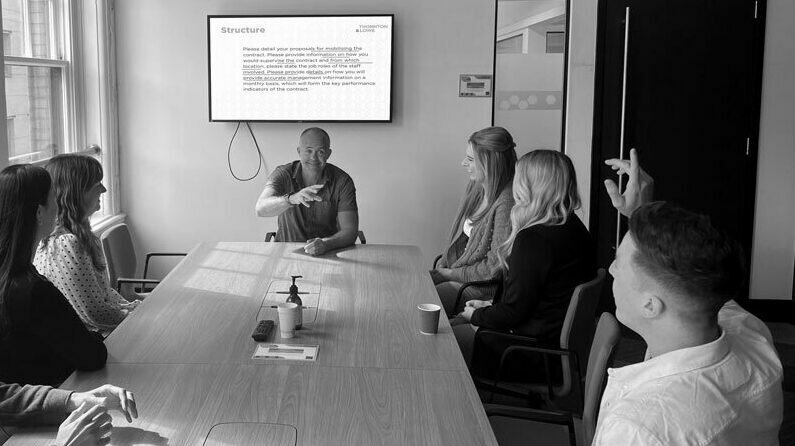
BAFO vs. RFP: Key Differences Explained
When navigating the complex procurement landscape, understanding the distinction between initial Request for Proposal (RFP) responses and Best and Final Offers (BAFOs) is crucial for suppliers. While both are components of the same procurement journey, they serve fundamentally different purposes and require distinct approaches.
The RFP stage represents the formal beginning of the competitive process, where you're introducing your solution to the buyer for the first time. At this point, you're typically competing against numerous other suppliers, many of whom may have significantly different approaches. Your RFP response needs to establish your credibility, demonstrate your understanding of requirements, and outline your proposed solution in a way that secures your place on the shortlist.
In contrast, the BAFO stage occurs after initial evaluation, when the field has narrowed considerably. If you've received a BAFO invitation, the buyer has already determined that your organisation can potentially deliver the contract – they're now looking for refinements rather than wholesale reassessment. The competition has typically reduced to just two or three suppliers, and the evaluation is often focused on specific aspects rather than the entire proposal.
This fundamental difference in purpose should drive your approach. While RFP responses require comprehensive coverage of all requirements to avoid disqualification, BAFOs allow for more targeted refinements addressing specific buyer concerns or opportunities for improvement. The procurement team will have already digested your full proposal and formed initial impressions – your BAFO provides the opportunity to address any lingering concerns, enhance particularly valued elements, or clarify aspects that may have been misinterpreted.
Another key distinction lies in the negotiation element. RFP responses typically have limited scope for negotiation, with suppliers responding to fixed specifications. BAFOs, by contrast, often incorporate a dialogue phase where aspects of the solution can be discussed and refined. This dialogue provides valuable insight into buyer priorities that weren't necessarily explicit in the original tender documents – information that should heavily influence your final submission.
The evaluation process also differs significantly. RFP evaluation typically follows a structured scoring matrix covering all aspects of the requirement, while BAFO assessment often focuses more intensely on differentiating factors between the remaining suppliers. This shift means your BAFO should emphasise your unique strengths and directly address any areas where you may have scored lower during initial evaluation.
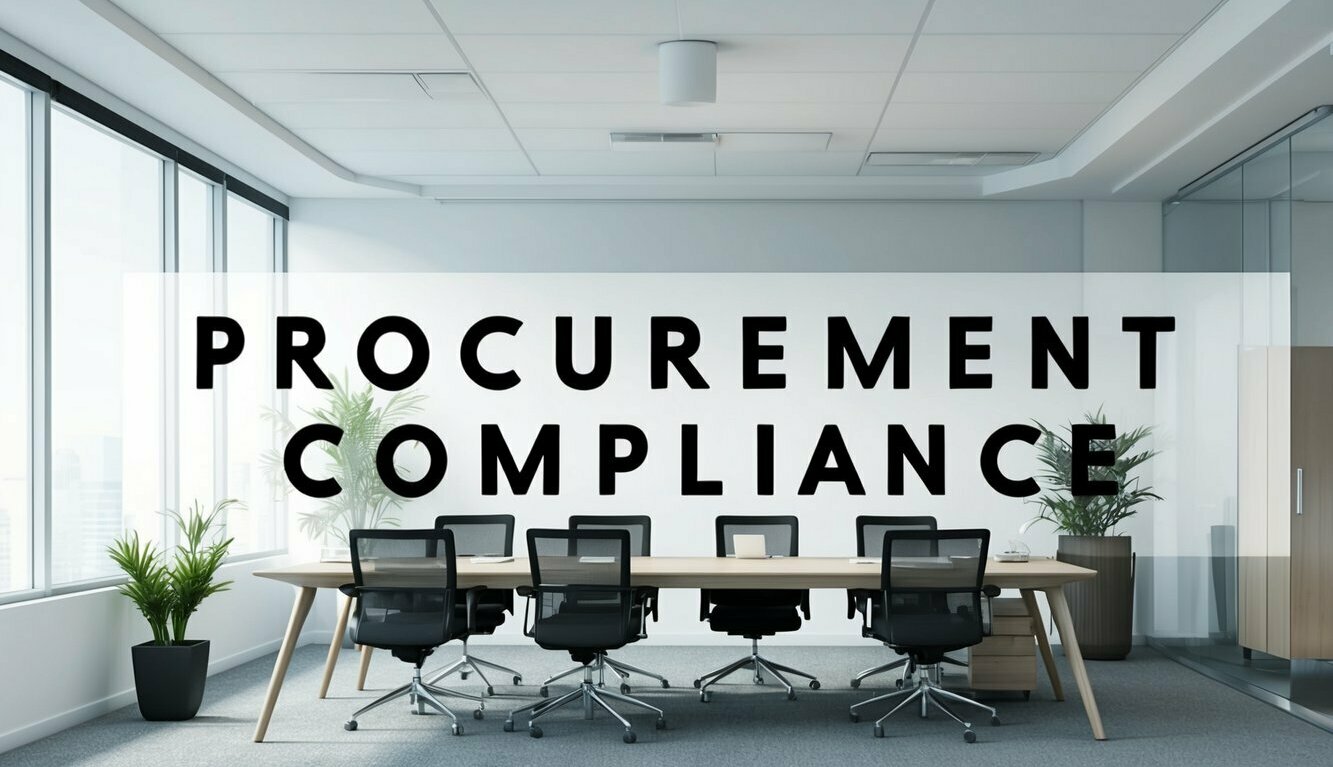
BAFO Under the Procurement Act 2023: What's Changed?
The introduction of the Procurement Act 2023 represents the most significant change to UK procurement rules in a generation, with substantial implications for how BAFOs are conducted and evaluated. Understanding these changes is essential for suppliers wanting to navigate this critical stage successfully in 2025 and beyond. Compliance is key!
Perhaps the most significant change affecting BAFOs is the introduction of the new Competitive Flexible Procedure, which replaces several previous procedures including Competitive Dialogue and Competitive Procedure with Negotiation. This consolidated approach provides contracting authorities with greater flexibility in structuring their procurement process, including how and when they incorporate BAFO stages.
Under the new procedure, buyers have enhanced ability to refine their requirements throughout the procurement process. This means the specifications you encounter at BAFO stage might differ significantly from the original tender documents. While this creates challenges in maintaining compliance, it also presents opportunities for innovative suppliers to demonstrate agility and responsiveness to evolving needs. Your BAFO approach must therefore balance adherence to the core requirements with flexibility to incorporate any refinements the buyer has introduced during the process.
Transparency requirements have also been strengthened under the new Act. Contracting authorities must now provide clearer feedback to suppliers at all stages, including more detailed information about scoring and assessment criteria. This increased transparency should provide you with better insight into why you've been invited to BAFO stage and which aspects of your initial proposal require strengthening. Successful suppliers are using this enhanced feedback to develop highly targeted BAFO submissions that directly address previously identified weaknesses.
The Act also introduces stronger requirements around social value considerations, with most procurements now requiring explicit evaluation of wider social, economic and environmental benefits. This expanded focus means your BAFO should include refined social value propositions that are both quantifiable and contract-specific. Generic commitments that might have sufficed in initial proposals must now be replaced with detailed implementation plans and measurable outcomes tailored to the specific contract and locality.
Another significant change relates to supplier exclusion and selection. The Act introduces new mandatory and discretionary exclusion grounds, along with a centralised debarment list. While this primarily affects the early stages of procurement, it has implications for BAFOs too – particularly if your consortium composition or supply chain has changed since initial submission. Any such changes must be thoroughly assessed against the new exclusion criteria to ensure continued compliance.
The remedies regime has also been reformed, with new thresholds for challenges and changes to standstill periods. This creates both risks and opportunities during the BAFO stage. On one hand, the more structured approach to challenges means buyers are likely to be increasingly meticulous about procedural compliance. On the other, the clearer rules provide a more predictable environment for suppliers who understand and follow the prescribed processes.
Need bid support?
Contact us todayBAFO Timeline: Managing the Process from Invitation to Submission
The period between receiving a BAFO invitation and submitting your refined proposal is typically brief but intense. Effective time management during this critical window can make the difference between a rushed, suboptimal submission and a polished, winning proposal. While exact timelines vary, most organisations benefit from a structured approach that allocates sufficient time to each essential activity.
The BAFO journey typically begins with receipt of the invitation, which often includes specific feedback on your initial proposal along with revised requirements or clarifications. Resist the temptation to immediately begin drafting responses. Instead, dedicate the first 1-2 days to thoroughly analysing the invitation, understanding the feedback, and identifying precisely what has changed from the original tender. This analytical phase is crucial – rushing past it often leads to misaligned responses that fail to address the buyer's real concerns.
Once you've gained clarity on requirements, the next 2-3 days should focus on strategic planning. This involves bringing together key stakeholders from across your organisation to develop a coherent approach that addresses the specific points raised in the BAFO invitation. During this phase, decide which elements of your original proposal will remain unchanged, which require refinement, and which need complete redevelopment. This strategic alignment ensures everyone contributing to the BAFO understands the priorities and direction.
The core development phase typically occupies the middle portion of your available time, usually 5-7 days for a standard BAFO. During this period, subject matter experts develop content, pricing teams refine commercial models, and project managers coordinate inputs across the team. Establish clear internal deadlines for each component, building in contingency for inevitable delays. Daily progress check-ins help identify bottlenecks early and allow for resource reallocation if certain sections are falling behind schedule.
Reserve at least 2-3 days before submission for the review and refinement process. This should include technical accuracy checks, compliance verification, and quality assurance reviews to ensure your submission is not just responsive but persuasive and error-free. For high-value contracts, consider incorporating an external review by someone not involved in the development process, who can assess the proposal with fresh eyes and identify potential weaknesses or inconsistencies.
The final 1-2 days should focus exclusively on formatting, final proofreading, and submission preparation. This includes ensuring all documents are correctly formatted, required signatures are obtained, and file sizes comply with portal limitations. Plan to finalise your submission at least 24 hours before the deadline to accommodate any last-minute technical issues with submission portals or unexpected internal delays.
Throughout this timeline, maintain regular communication with the buyer as permitted within the procurement rules. Clarification questions should be submitted as early as possible to allow time for responses to be incorporated. If dialogue sessions are part of the process, prepare thoroughly for these discussions and ensure key decision-makers are available to participate.




